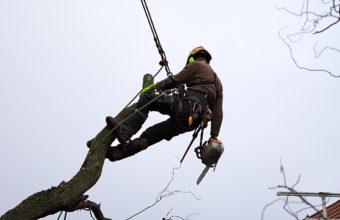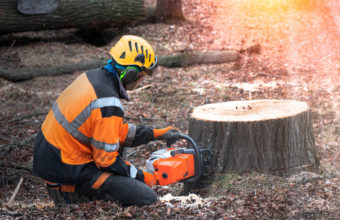Arborist and forestry are related fields that both deal with trees and forests, but they have different focuses, scopes, and objectives.
Here are the key differences between arborists and forestry…
- Focus and Scope:
- Arborist – Arborists primarily focus on the care, maintenance, and management of individual trees and small groups of trees within urban or suburban settings. Their work involves assessing the health of trees, diagnosing and treating tree diseases, pruning for safety and aesthetics, and providing services like tree removal and planting. Arborists often work with property owners, homeowners, municipalities, and commercial entities to address tree-related concerns on a local scale.
- Forestry – Forestry, on the other hand, is a broader field that deals with the management of entire forests and woodland ecosystems, often in rural or natural settings. Foresters are concerned with the sustainable management of forests for various purposes, including timber production, wildlife habitat conservation, watershed protection, and recreation. They plan and implement forest management practices such as tree harvesting, reforestation, wildfire prevention, and habitat restoration.
- Scale of Operations:
- Arborist – Arborists typically work at a smaller scale, dealing with individual trees, residential properties, and small-scale commercial projects. Their work is often focused on the well-being of individual trees and ensuring their health and safety.
- Forestry – Forestry operations are carried out on a larger scale, covering extensive forested areas. Foresters manage entire forest ecosystems, considering long-term sustainability and the broader ecological impacts of their actions.
- Goals:
- Arborist – The primary goal of arborists is to ensure the health, safety, and aesthetics of trees in urban and suburban environments. They aim to enhance the quality of life in communities by maintaining healthy trees that provide shade, improve air quality, and contribute to the overall environment.
- Forestry – Forestry professionals focus on multiple objectives, including timber production, conservation, wildlife habitat improvement, and the protection of natural resources. Sustainable forestry practices aim to balance economic, environmental, and social benefits.
- Education and Training:
- Arborist – Arborists undergo specialized training and certification in arboriculture, which focuses on tree care and maintenance. They may earn certifications like Certified Arborist (CA) or Master Arborist to demonstrate their expertise.
- Forestry – Foresters often have a broader education in natural resource management, forest ecology, and environmental science. They may hold degrees in forestry or related fields and can become licensed foresters.
While both arborists and foresters work with trees, their areas of focus, scales of operation, and goals differ significantly. Arborists concentrate on the care and management of individual trees in urban and suburban environments, whereas foresters are responsible for the sustainable management of forests and larger-scale forested areas, often for timber production and conservation purposes.






